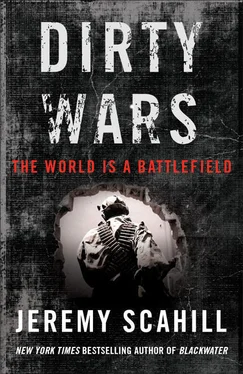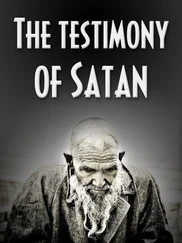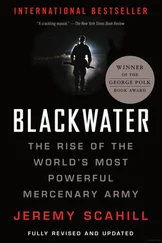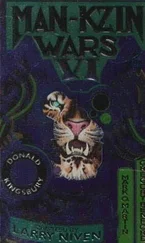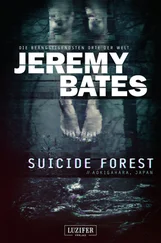The detainee would be shackled by [the] hands and feet and transported to the airport by road and loaded onto a plane. He would usually be transported in a reclined sitting position with his hands shackled in front. The journey times…ranged from one hour to over twenty-four to thirty hours. The detainee was not allowed to go to the toilet and if necessary was obliged to urinate and defecate into the diaper.
According to the ICRC, some of the prisoners were bounced around to different black sites for more than three years, where they were kept in “continuous solitary confinement and incommunicado detention. They had no knowledge of where they were being held, no contact with persons other than their interrogators or guards.” The US personnel guarding them wore masks. None of the prisoners was ever permitted a phone call or to write to inform their families they had been taken. They simply vanished.
During the course of their imprisonment, some of the prisoners were confined in boxes and subjected to prolonged nudity—sometimes lasting for several months. Some of them were kept for days at a time, naked, in “stress standing positions,” with their “arms extended and chained above the head.” During this torture, they were not allowed to use a toilet and “had to defecate and urinate over themselves.” Beatings and kickings were common, as was a practice of placing a collar around a prisoner’s neck and using it to slam him against walls or yank him down hallways. Loud music was used for sleep deprivation, as was temperature manipulation. If prisoners were perceived to be cooperating, they were given clothes to wear. If they were deemed uncooperative, they’d be stripped naked. Dietary manipulation was used—at times the prisoners were put on liquid-only diets for weeks at a time. Three of the prisoners told the ICRC they had been waterboarded. Some of them were moved to as many as ten different sites during their imprisonment. “I was told during this period that I was one of the first to receive these interrogation techniques, so no rules applied,” one prisoner, taken early on in the war on terror, told the ICRC. “I felt like they were experimenting and trying out techniques to be used later on other people.”
As the CIA began applying SERE tactics on more detainees at its black sites, Rumsfeld was not content with the Agency running interrogations. In late 2002, JSOC formed a task force to draw up plans for a potential role for its personnel in interrogating “designated unlawful combatants.” The CIA was reporting to the White House—specifically Cheney’s office—on its progress in using SERE tactics at its black sites, but JSOC could provide far greater flexibility and far less oversight. JSOC operators were tapped by the White House to participate in a parallel interrogation program known by its unclassified code name as Copper Green. Internally, the program was called Matchbox. Interrogation would be one of their key tactics, but Cheney and Rumsfeld had much broader plans for a new, unaccountable way of waging a global, secret war.
WITHIN THE US LAWS governing military and intelligence operations, there are gray areas. Title 50 of the US code, or federal law, sets out the rules and structures for intelligence operations, while Title 10 covers military actions. The code under which a particular operation is performed has serious implications for oversight and accountability. The terms “covert” action and “clandestine” operations are often thrown around as though they mean the same thing. They do not. “Covert action” is a doctrinal and legal term that, broadly speaking, refers to an activity whose sponsorship is meant to be a secret. It is meant to provide the United States with “plausible deniability.” Such operations are extremely risky—not just in terms of the operational danger, but because they often involve secret US agents conducting operations inside the borders of a sovereign country without alerting its government. If the operation is exposed or disrupted, the potential for scandal is very real. The legal definition of covert action, according to Title 50, is “An activity or activities of the United States Government to influence political, economic, or military conditions abroad, where it is intended that the role of the United States Government will not be apparent or acknowledged publicly.” A covert action requires a presidential finding and for the White House to brief the House and Senate Intelligence Committees on its contents. This briefing must occur before the covert action unless there are “extraordinary circumstances.” The requirements for congressional involvement were established to prevent scandals such as the Bay of Pigs invasion of Cuba and Iran-Contra. Those operations were passionately supported by Cheney and Rumsfeld. Although they no doubt regretted the fact that Iran-Contra became public and stirred controversy, they did not regard the operation itself as a scandal but rather as a model for how the United States should conduct its dirty business.
Military doctrine defines another class of activities, “clandestine operations,” in which the point of secrecy is to protect the integrity of the mission, not to conceal its sponsor, the US government. The military may conduct operations that are both covert and clandestine, but these are rare. Unlike covert actions, clandestine operations do not require a presidential finding if “future hostilities” are “anticipated” in the country where they are taking place. Nor is the administration required to report the operation to Congress. Such operations are defined as “Traditional Military Activities” and offer the intelligence committees no real-time oversight rights. Under US law, the military is not required to disclose the specific actions of an operation, but the US role in the “overall operation” should be “apparent” or eventually “acknowledged.”
From where Rumsfeld and Cheney were sitting, the United States was at war, and the world was a battlefield. Therefore, hostilities were “anticipated” in every country on earth, necessitating dozens if not hundreds of potential “Traditional Military Activities” across the globe. Cheney and Rumsfeld realized that by using JSOC—a black-ops force whose activities arguably straddled both Title 10 and Title 50—they could operate in the crevice separating US military and intelligence law. Much of JSOC’s operations could be classified under military doctrine as “Preparing the Battlespace,” which is defined by the US Special Operations Command as “the umbrella term for all activities conducted prior to D-Day, H-Hour to plan and prepare for potential follow-on military operations…in likely or potential areas of employment, to train and prepare for follow-on military operations.” Such activities could be conducted as Advance Force Operations (AFOs), which are “military operations conducted by forces which precede the main elements into the area of operations to prepare for follow-on operations.” Unlike CIA operations, AFOs can be carried out with minimal external oversight—for a significant period of time—prior to an “overt” hostility, or for a “contingency” that may or may not occur.
The congressional intelligence committees viewed this logic as a work-around to oversight and reporting laws, charging that the Defense Department wanted to liberally deploy its increasingly formidable intelligence capabilities abroad under the pretense of operational planning for future military hostilities, without granting the intelligence committees their due oversight.
Adding another layer of bureaucratic complexity to this already murky area of US law was the fact that the armed services committees authorized the funding for operations, and the intelligence committees held the power to determine what constituted a covert action. Those committees often clashed on this very issue and fiercely guarded their turf, leaving a huge opening for potential abuses and the exploitation of gaps or gray areas.
Читать дальше
